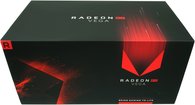 At the end of last year we were able to marvel at the Vega64 in its first form and since then the manufacturer (and thus also the readers, as well as the potential customers) fed us again and again with small bits of information and announcements about the new chip, but was never really concrete.
At the end of last year we were able to marvel at the Vega64 in its first form and since then the manufacturer (and thus also the readers, as well as the potential customers) fed us again and again with small bits of information and announcements about the new chip, but was never really concrete.
The problem with the whole thing is that it is precisely through this that an almost exaggerated expectation is built up, which one can probably only rarely satisfy in the end and at some point the story simply slips out of your hands and perhaps even falls on your feet. Self-dynamics can be uncontrollable.
You can also overstretch the arc of tension and almost destroy an innovative and really interesting product by simply letting too much time pass in which you can chase your own goals without being able to catch up with them. Of course, it is not for us to criticise AMD for its product policy, because the real reasons are probably known only by the manufacturer itself. But for an outsider, it was and is difficult to understand.
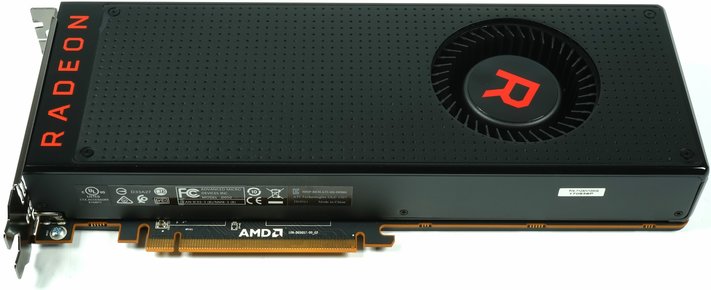
Why are we making so far with this introduction? We have simply considered how we can deal fairly with a product that actually appears a year late on the market. Of course, it would be better to explain late than never, but that would probably have been too short. What had not all been discussed in the forums. There was talk of miracle drivers, final BIOSen, unlocked functions (Binning Rasterizer) and much more. But Speculatius is more of a Christmas and we now only have late summer.
That's why we're just pretending it's the end of 2016 and the Vega64 is still fully on schedule. The Vega FE has just been launched and has opened up a real niche in the market of prosumers and content producers. This is also the case, as you can see from our test for the Vega Frontier Edition. That is why we are not digressing any further now, but are finally concentrating on the essentials.
Last week we received an interesting package with extensive content, including various three-pieces in the form of a cube with Radeon hologram, a Radeon Vega ribbon, various stickers and a package with interposer, chip and HBM2. In terms of packaging, AMD has now really upgraded and even if it is only a limited edition for media and noble partners – it is already making something.

However, since our focus is not on the assessment of presentations and packaging or the opening of the same (there is YouTube for this), we will try to approach the following tests as objectively as possible, because only in this way can a product be treated in a really fair way. . We will therefore focus once again on the theory behind the chip, the technical implementation of the board and radiator, as well as this time on gaming performance. Accurate analyses of the power consumption and the professional measurement of temperatures and noise emissions are of course also included.
For cooling, overclocking and some other features, we will carry out further tests in a follow-up with the water cooling conversion, because the differences of many settings could hardly be achieved with the current air cooler or could hardly be sufficiently represent or Judge. That's why at this point a teaser on what's to come.
The situation is different for the Vega56. Since AMD has obviously not even managed to provide samples to all editorial offices equally and on an equal basis, we unfortunately have to leave all the answers open in this regard. In the absence of hardware, there will be no test at the moment, so much in advance. Whether this already reflects the possibly limited availability in the trade cannot be answered at this point.
Optics, haptics and connections
The card, which weighs 1066 grams (16 grams more than the Frontier Edition), is 26.8 cm long (from outside edge slot aperture to the end of the case), 10.5 cm high (from top edge motherboard slot to top edge case) and 3.8 cm deep. This makes it a real dual slot card, even if the backplate is again approx. 0.4 cm on the back.
 |
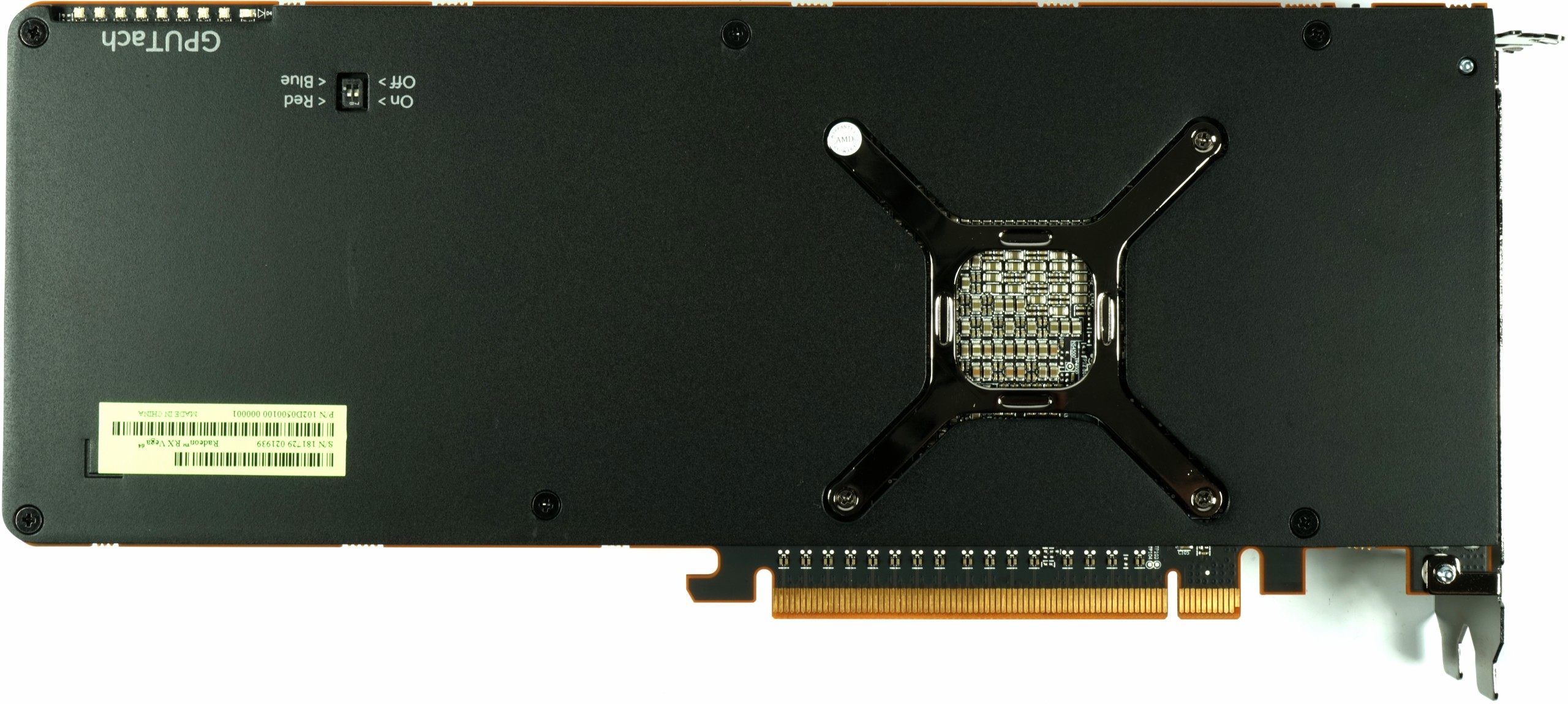 |
The housing cover and backplate are made of black anodized aluminium, which is valuable and cool. The surface structure of the lid was simply realized by cold deformation before anodizing. All screws are painted matt black. Only the printed red Radeon logo at the front stands out in colour.

The top is characterized by the two 8-pin PCIe clamping supply connectors, as well as the illuminated red Radeon logo. We also find a BIOS switch that provides access to a BIOS with significantly low power consumption. Quiet, cooler and of course a little slower. Together with the three new modes in the Wattman "Turbo" (max. Power Limit), Balanced, and Power Saver (min. Power Limit) results in several variations, which we will discuss later.

The end of the card is closed and on the frame you will find the usual holes for mounting workstation cards. The matt black powder-coated slot aperture accommodates three DP connectors and an HDMI 2.0. A DVI-I has been cleverly dispensed with for reasons of flow technology, because the aperture is at the same time the outlet of the warm exhaust air from the cooling system.
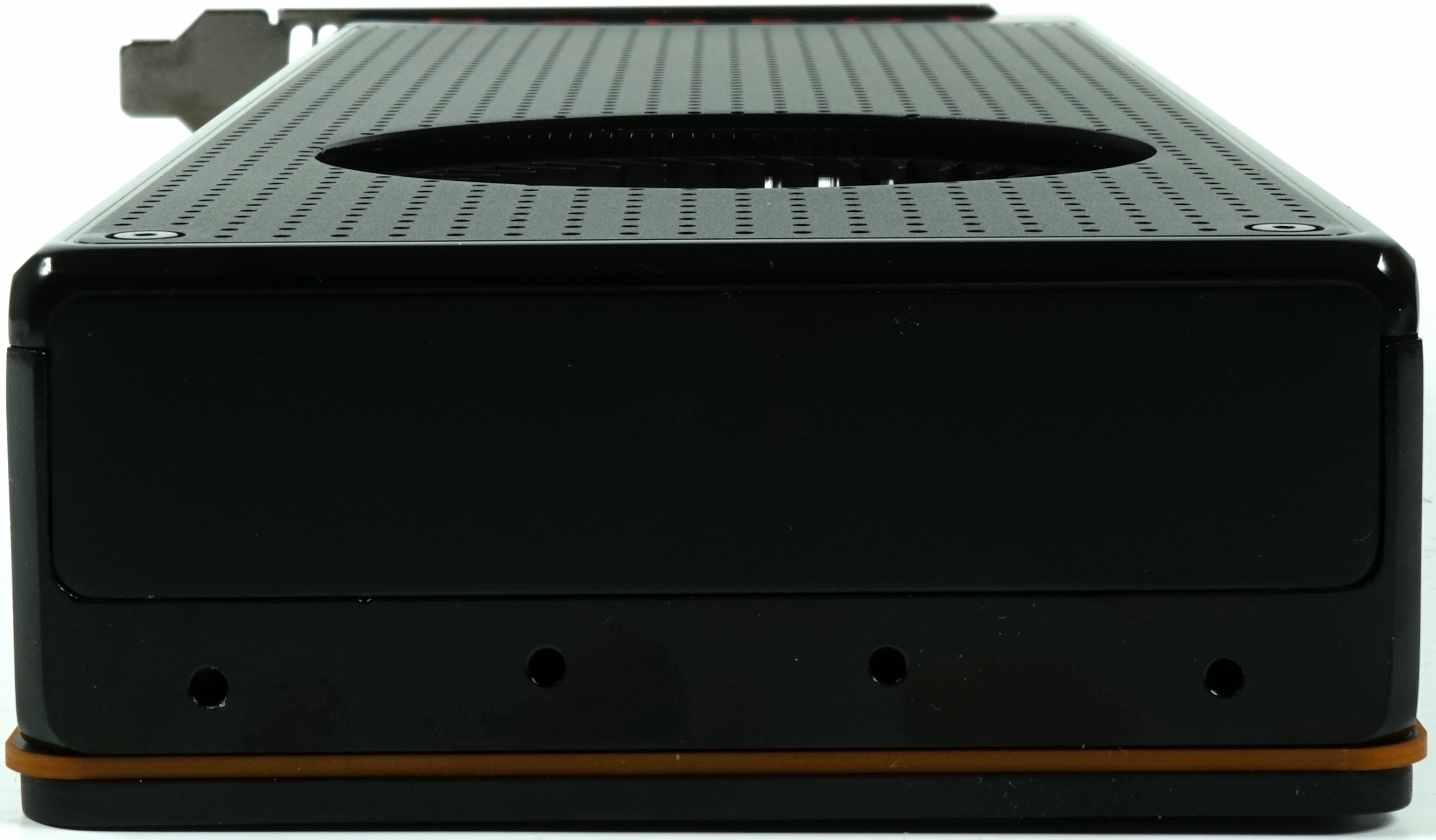 |
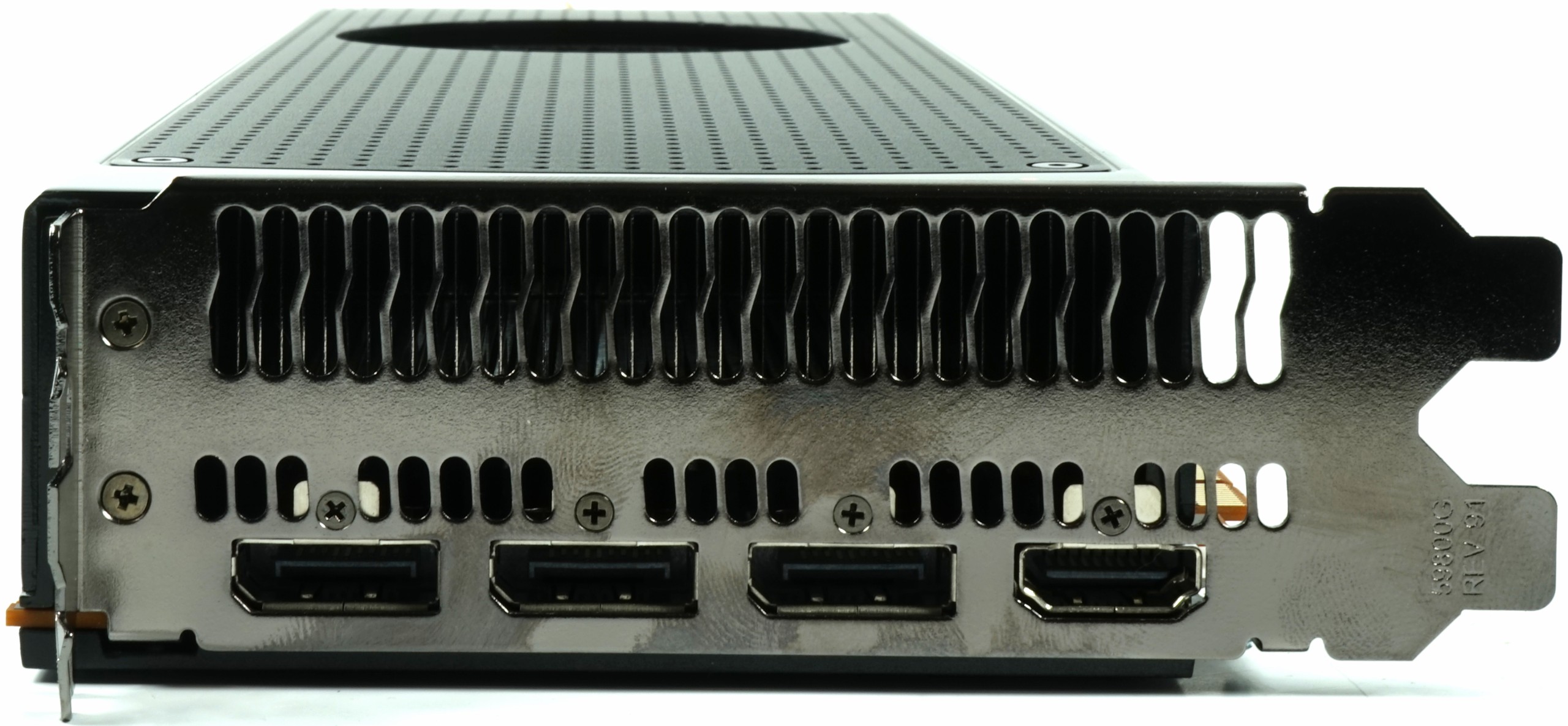 |
| Model | Radeon Vega64 |
Radeon Vega FE |
Radeon R9 Fury X |
Geforce GTX 1080 |
Geforce GTX 1080 Ti |
|---|---|---|---|---|---|
| Gpu | Vega 10 XTX | Vega 10 XTX | Fiji XT | GP104 (400-A1) |
GP102 (350-K1-A1) |
| Chip size | 484 mm2 | 484 mm2 | 596 mm2 | 471 mm2 | 471 mm2 |
| Transistors | 12.5 billion | 12.5 billion | 8.9 billion | 12 billion | 12 billion |
| GPU base clock/ Boost clock |
1406 MHz 1677 MHz |
1138 MHz 1382 MHz |
K.a. 1050 MHz |
1480 MHz 1582 MHz |
1480 MHz 1582 MHz |
| Shader/SIMD | 4096/64 | 4096/64 | 4096/64 | 3840/30 | 3584/28 |
| Texture Units/ROPS |
256/64 | 256/64 | 256/64 | 240/96 | 224/88 |
| Pixel fill rate |
98.9 GPix/s | 88.4 GPix/s | 67.2 GPix/s | 151.9 GPix/s | 141.7 GPix/s |
| Texture Fill Rate | 395.8 GTex/s | 353.8 GTex/s | 268.8 GTex/s | 379.7 GTex/s | 354.1 GTex/s |
| Memory connection | 2048 Bit | 2048 Bit | 4096 Bit | 384 bits | 352 bits |
| Storage type | HBM2 | HBM2 | Hbm | GDDR5X | GDDR5X |
| Memory bandwidth |
483.8 GB/s | 483.8 GB/s | 512.0 GB/s | 547.6 GB/s | 484.0 GB/s |
| Speed. Graphics |
1.89 Gbps | 1.89 Gbps | 1.0 Gbps | 11.4 Gbps | 11.0 Gbps |
| Storage expansion |
8 GB | 16 GB | 4 GB | 12 GB | 11 GB |
| DX12 Feature Level | 12_1 | 12_1 | 12_0 | 12_1 | 12_1 |
| PCIe sockets | 2 x 8-pin | 2 x 8-pin | 2 x 8-pin | 6 + 8-pin | 6 + 8-pin |
| Tbp | 295 watts | 300 watts | 275 watts | <250 Watt | <250 Watt |
Test system and measurement methods
The new test system and the methodology have already been described in great detail in the basic article "How We Test Graphics Cards" (English: "How We Test Graphics Cards") and therefore, for the sake of simplicity, we now only refer to this detailed Description. So if you want to read everything again, you are welcome to do so. However, we have again improved CPU and cooling to largely exclude possible CPU bottlenecks for this fast card.
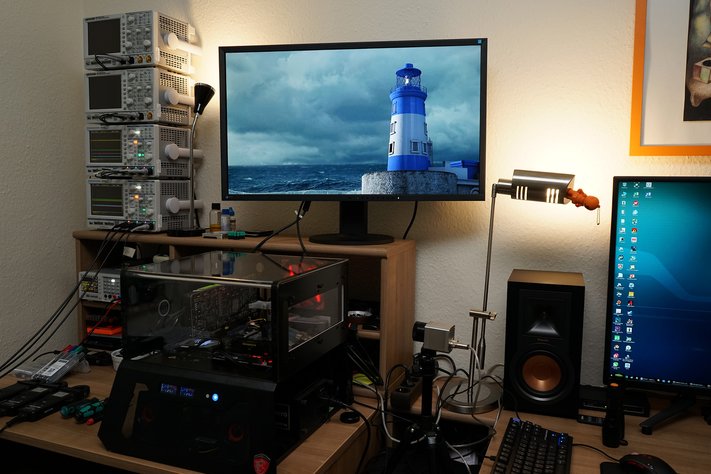
If you are interested, the summary in table form quickly provides a brief overview:
| Test systems and measuring rooms | |
|---|---|
| Hardware: |
Intel Core i7-6900K -4.3GHz MSI X99S XPower Gaming Titanium Corsair Vengeance DDR4-3200 1x 1 TByte Toshiba OCZ RD400 (M.2, System SSD) 2x 960 GByte Toshiba OCZ TR150 (Storage, Images) Be Quiet Dark Power Pro 11, 850-watt power supply |
| Cooling: |
Alphacool Ice Block XPX Alphacool Ice Age 2000 Chiller 2x Be Quiet! Silent Wings 3 PWM (Closed Case Simulation) Thermal Grizzly Kryonaut (for cooler change) |
| Housing: |
Lian Li PC-T70 with expansion kit and modifications Modes: Open Benchtable, Closed Case |
| Monitor: | Eizo EV3237-BK |
| Power consumption: |
non-contact DC measurement on the PCIe slot (Riser-Card) non-contact DC measurement on the external PCIe power supply Direct voltage measurement on the respective feeders and on the power supply 2x Rohde & Schwarz HMO 3054, 500 MHz multi-channel oscillograph with memory function 4x Rohde & Schwarz HZO50, current togor adapter (1 mA to 30 A, 100 KHz, DC) 4x Rohde & Schwarz HZ355, touch divider (10:1, 500 MHz) 1x Rohde & Schwarz HMC 8012, digital multimeter with storage function |
| Thermography: |
Optris PI640, infrared camera PI Connect evaluation software with profiles |
| Acoustics: |
NTI Audio M2211 (with calibration file) Steinberg UR12 (with phantom power for the microphones) Creative X7, Smaart v.7 own low-reflection measuring room, 3.5 x 1.8 x 2.2 m (LxTxH) Axial measurements, perpendicular to the center of the sound source(s), measuring distance 50 cm Noise in dBA (Slow) as RTA measurement Frequency spectrum as a graph |
| Driver | Radeon: 17.20.1035 Quadro: R381 U2 (382.05) |
| Operating system | Windows 10 Pro (Creators Update, all updates) |
- 1 - Einführung und Übersicht
- 2 - Details zu Architektur und HBM2-Speicher
- 3 - Demontage, Kühler und Interposer-Details
- 4 - Platinendesign und Detailinformationen
- 5 - Ashes of the Singularity: Escalation
- 6 - Battlefield 1
- 7 - Warhammer 40,000: Dawn of War III
- 8 - Doom (2016)
- 9 - Tom Clancy's Ghost Recon Wildlands
- 10 - Hitman (2016)
- 11 - Metro Last Light (Redux)
- 12 - Rise of the Tomb Raider
- 13 - Tom Clancy's The Division
- 14 - The Witcher 3
- 15 - Und kann sie Mining?
- 16 - Leistungsaufnahme im Detail
- 17 - Takt, Temperaturen und Geräuschemission
- 18 - Zusammenfassung und Fazit
































Kommentieren